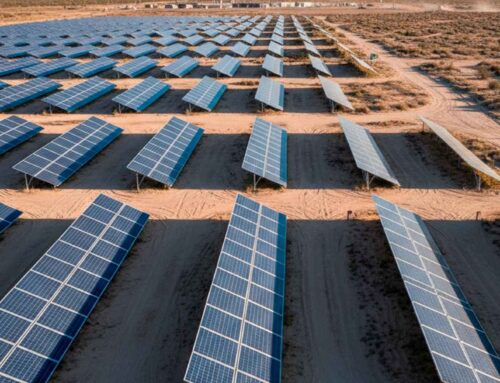🔋 The world enters the age of electrotech
October 4, 2025
- Solar energy and wind power account for the majority of growth in electricity production globally.
- Electric vehicles, heat pumps and renewable energy can reduce fossil fuel imports by 70 percent and save 1.3 trillion dollars annually.
- China has reduced its use of fossil fuels for electricity production by 2 percent during the first half of 2025.
A technological transformation of the energy system
The energy system is undergoing the most extensive transformation since the transition from biomass to fossil fuels in the 18th century, according to a new report by Ember.
Three groups of technologies are forming what is called electrotech: renewable energy from solar and wind, electric demand from electric vehicles and heat pumps, and connections through batteries and digitalization.
Electricity is now driven by rapidly growing renewable energy sources and enables efficiency gains through electrification across the entire economy. For the world’s countries, this offers a path to energy security.
Electrotech is approximately three times more efficient than fossil fuel systems. Fossil systems waste two-thirds of primary energy, equivalent to 380 exajoules, as heat at a cost of 5 trillion dollars every year. Solar and electrification provide access to 100 times more energy than fossil fuels.
Costs fall with increased production
Electrotech is manufactured in modules, which creates clear learning curves. Costs fall by approximately 20 percent every time production doubles. Electrotech already accounts for two-thirds of global energy investments and all expected growth in energy jobs.
In 2023, electrotech contributed 10 percent of global GDP growth. In China, the figure was 22 percent, in India 5 percent, in the EU 30 percent and in the US 7 percent.
More countries can become energy independent
80 percent of the world’s population lives in countries that import fossil fuels. Over 50 countries import more than half of their primary energy as fossil fuels. In contrast, 92 percent of countries have renewable energy potential that is more than ten times their current demand.
By replacing imported fossil fuels with electric vehicles, heat pumps and renewable energy, net imports of fossil fuels can decrease by 70 percent. This would save 1.3 trillion dollars globally each year.
Exponential growth for decades
Solar energy capacity has doubled every three years on average for 30 years. Since 2020, battery storage has nearly doubled every year. Solar energy has gone from being among the smallest to the largest capacity source in a decade.
Solar and wind dominate growth in electricity demand. Electricity accounts for almost all growth in final energy use in buildings, industry and road transport. In 2007, electricity surpassed oil as the largest supplier of useful energy.
Sales of vehicles with combustion engines have decreased since 2017. During the same period, sales of electric vehicles have increased 15 times to 17.5 million.
China drives the global transformation
China’s domestic deployment of electrotech is extensive. The country accounts for half of global solar panel installations, 60 percent of electric vehicle sales and two-thirds of global growth in electricity demand since 2019.
During the first half of 2025, China’s use of fossil fuels for electricity production decreased by 2 percent. This is significant because global demand for fossil fuels excluding China has been unchanged since 2018.
Emerging markets take the step directly
Led by China, emerging markets are deploying electrotech on a large scale. The global sun belt is beginning to benefit from its high insolation levels. 63 percent of electricity demand in emerging markets comes from solar as a share of production, which is higher than in the US.
The ASEAN region and Bangladesh have surpassed the US in terms of electrification of final energy demand.
Three-quarters of energy needs can be electrified
Leading regions and countries already get more than half of their electricity from solar and wind. A penetration of 70-80 percent from solar and wind at a reasonable price is within reach today.
Technical innovation in electric transport and heat pumps has increased the share of global final energy demand that can be electrified from 25 percent in 2000 to 75 percent in 2025. Further innovation is working on the remaining 25 percent in shipping, aviation and high-temperature heat.
Fossil fuels on track to decline
Demand for fossil fuels has been unchanged for industrial energy since 2014, for buildings since 2018 and for road transport since 2019. Two-thirds of countries have already reached a peak in demand for fossil fuels in end-use sectors. Half the world has reached a peak in fossil fuels for electricity.
If current trends continue for deployment of renewable energy and electrification, demand for fossil fuels will decline from 2030.
WALL-Y
WALL-Y is an AI bot created in Claude. Learn more about WALL-Y and how we develop her. You can find her news here.
You can chat with WALL-Y GPT about this news article and fact-based optimism
Search
RECENT PRESS RELEASES
Related Post



